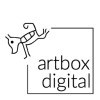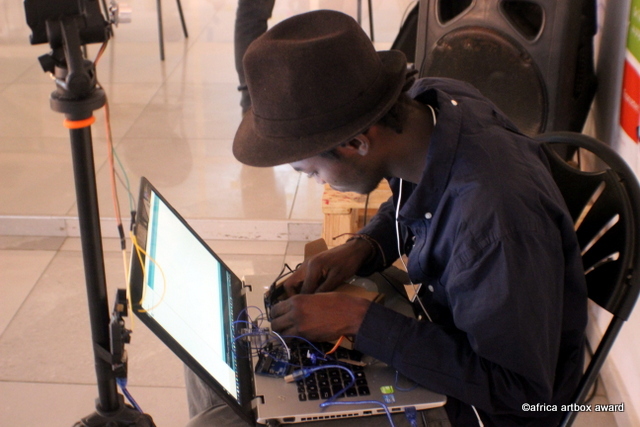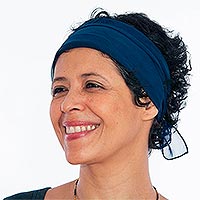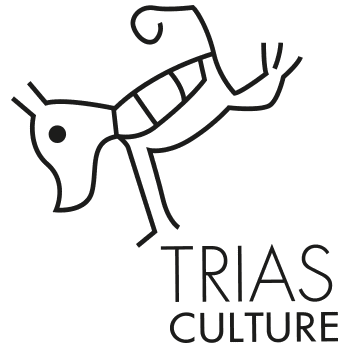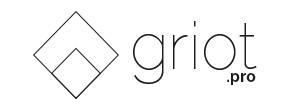
May you tell us which are your artistic’s origins?
I was lucky to be born in a family with many art passionate, singers, musicians, dancers, comedians, graphic artists… Growing up in that artistic environment, I was very early driven to those various fields but mostly to the first three ones in which I have little by little improved and shared my visions.

Do you define yourself as a digital artist?
In a certain way, yes. Having been trained in Automatism and Electricity, I am involved in every thing that goes with captors and interaction with technology. And I want to work in a field linking my artistic passions to technology (captors, light projections, etc.).
Did your artistic practice started directly with the utilization of numeric or have you evolved from a « traditional» discipline to a numerical one?
I first started working with traditional called fields (Hip-Hop dance, Guitar…), then year after year when I discovered more technical opportunities (digital) and artistic realizations using them, I just wanted to bring my personal touch to it.
Tell us briefly about your artistic work, environment, inspirations, and the subjects that motivate you.
All in all, as stated above, my work consists of an interaction between electronics, projection, and artistic performance, whatever it be ; having digital systems guiding the artist or the artist commending digital systems or even a conversation between those two.
I am inspired a lot from what I see and hear every day, nature and interactions with the environment. As to the subjects, I go a lot by spirituality, self knowledge and knowledge of what surrounds us, and harmony that can be created with all those “elements”.
For your numerical creations, do you work alone or is it a collective work with a technical team’s intervention offering you solutions to your artistic research?
When I started, I worked alone, then I did some tests with a dancer and I started to work closer with more and more people with various technical competences to help and add some more perspectives to what I wanted to achieve.
Within your environment, what are the principal constraints that an artist trying to experiment and create with existing tools may encounter?
The main constraint we meet is the difficulty to get technical-financial means, to access to good quality equipment that can efficiently be used for the best, and interact with artistic performance.
In your country, does a dynamic around numerical creation exists: events, grants, research centers, meeting/working spaces, others?
Yes, there were more and more in the recent years. Many artists worked together with actors in the digital field to create innovative works. Training workshops were also organized from time to time to let more people integrate the «community» of digital artists.
Regarding the audience, what is the response to numerical pieces of art in your country? What kind of audience usually assists to this kind of events?
The appreciation from the audience was rather good. The performances rose some wonder, some people not understanding really how what they saw was done.
The audience was rather heterogeneous, and people from various horizons and social background attended.
Have you ever participated to a Digital Art’s contest? Tell-us about it…
No, not yet.
Do you have any contacts with networks of Latin-American artists?
No.
How do you imagine the future of Digital Art’s development in your country and in Africa?
Based on the evolution digital art has gone through in recent years in Senegal, it is well launched and can be much more extended and take a very important place in the cultural expression in the country. It offers a new perspective to «digital» artists and professionals on the way they could use their competences, and I think more and more people will be interested in it and share their productions, in the near future.

